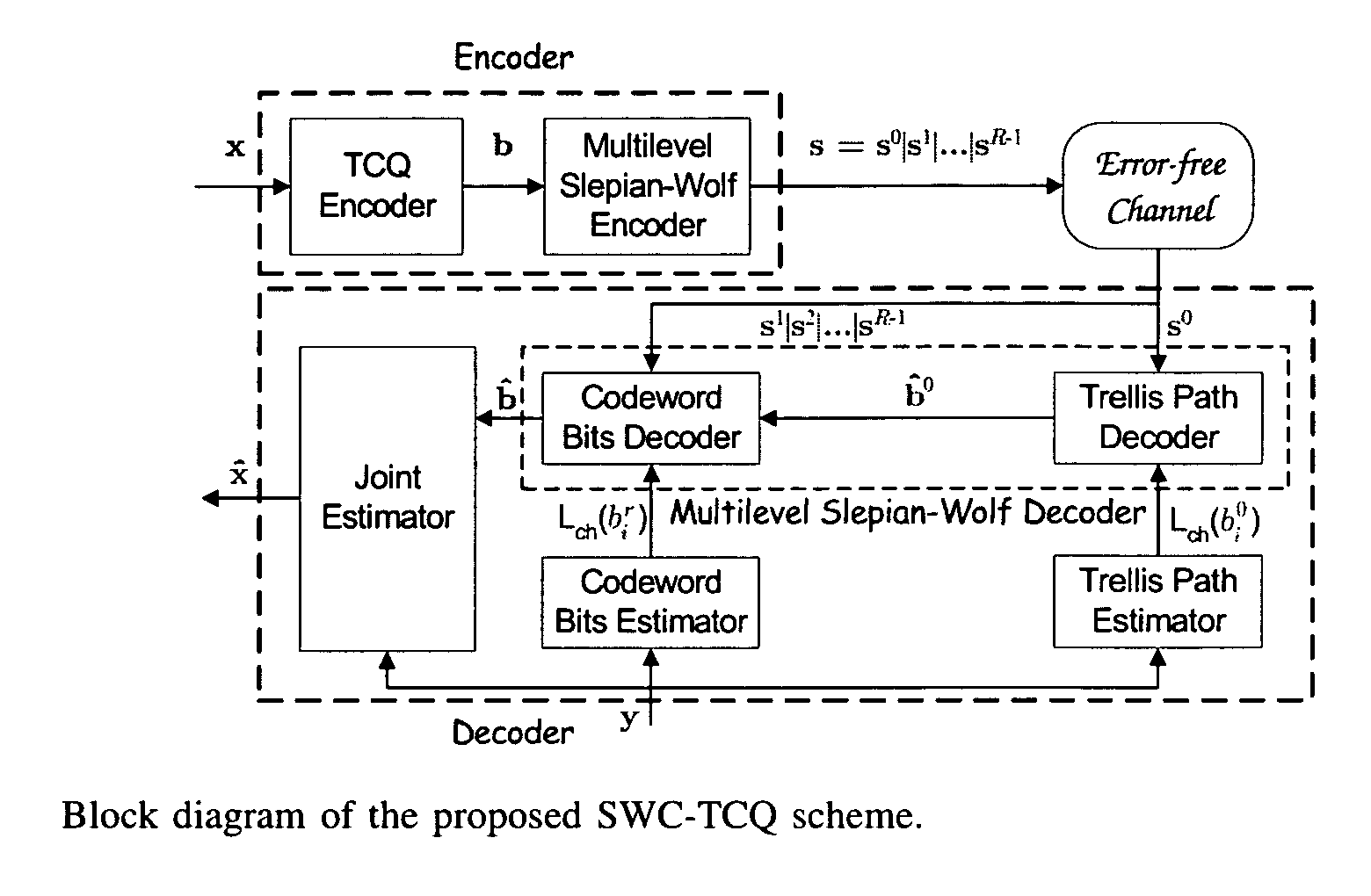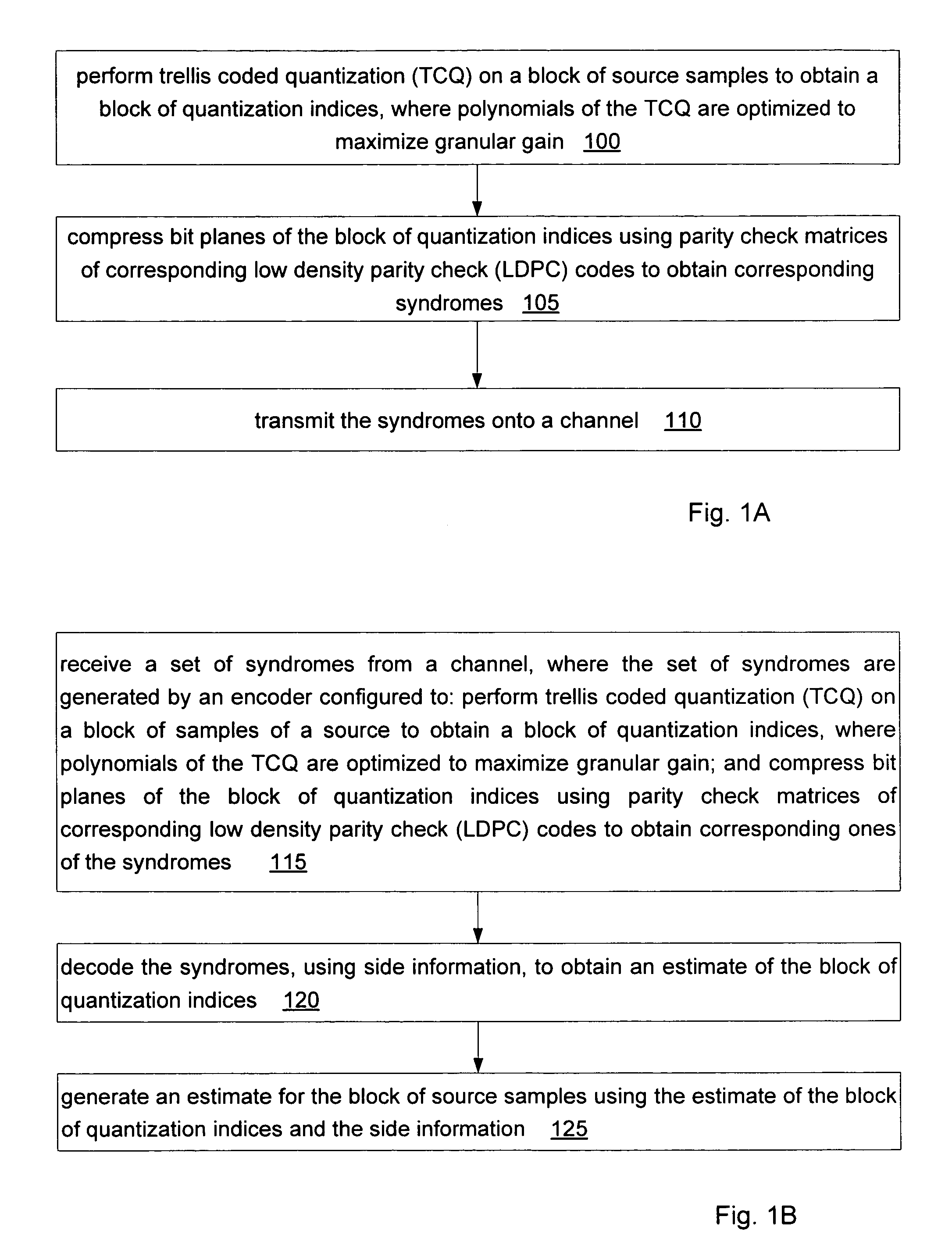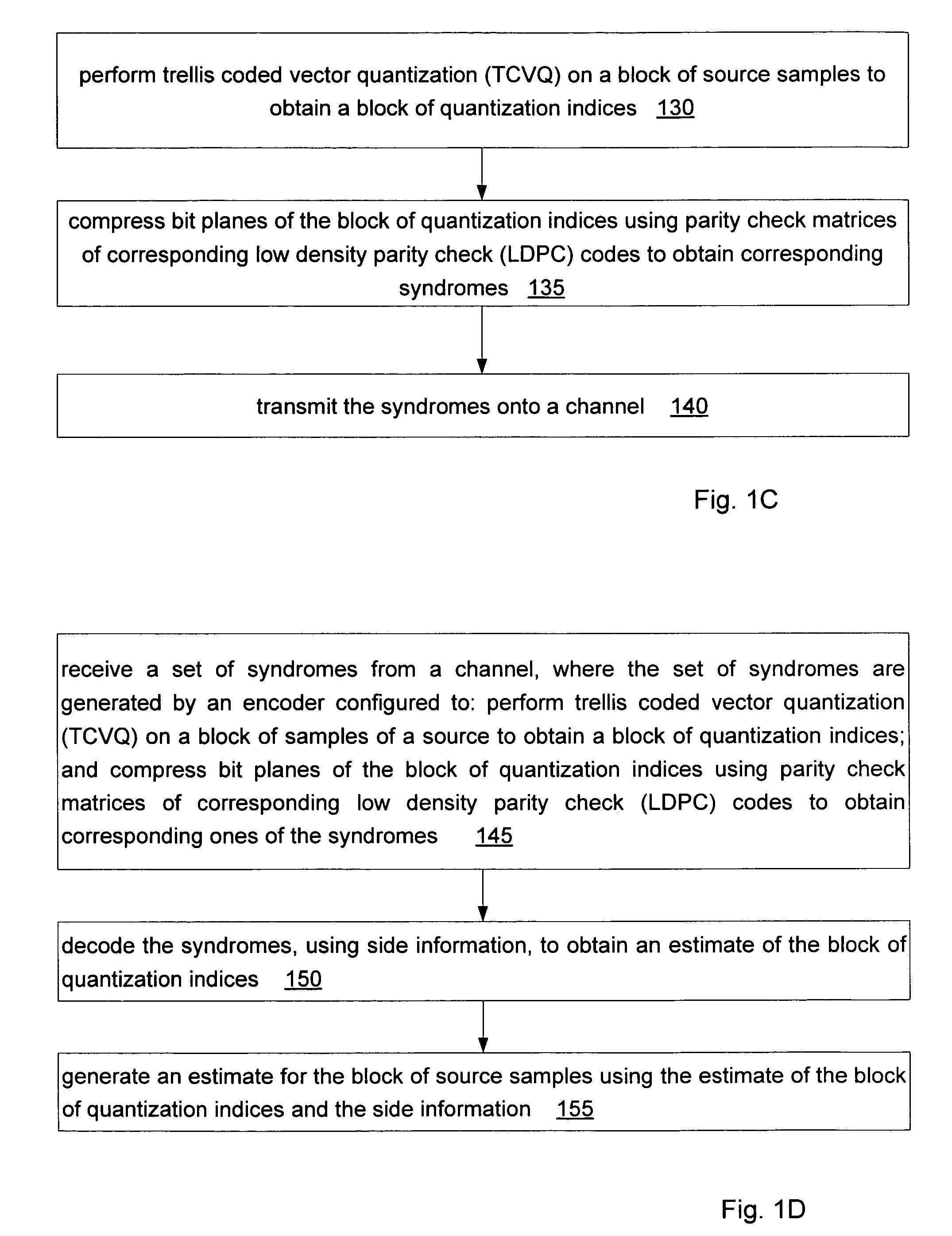Wyner-Ziv coding based on TCQ and LDPC codes
- Summary
- Abstract
- Description
- Claims
- Application Information
AI Technical Summary
Benefits of technology
Problems solved by technology
Method used
Image
Examples
Embodiment Construction
[0039]In one set of embodiments, a method for encoding information from a source may involve the following actions, as illustrated in FIG. 1A.
[0040]At 100, trellis coded quantization (TCQ) may be performed on a block of samples of the source to obtain a block of quantization indices. The polynomials of the TCQ will have been optimized to maximize granular gain at code design time. See section VII-B for more information on how to optimize the polynomials of the TCQ.
[0041]The source may be a continuous source. However, in some embodiments, the source may be a discrete source having a finite alphabet.
[0042]At 105, bit planes of the block of quantization indices may be compressed using parity check matrices of corresponding low density parity check (LDPC) codes to obtain corresponding syndromes. In particular, each of the bit planes may be compressed using a corresponding one of the parity check matrices. The parity check matrix for each of the bit planes may be separately optimized.
[00...
PUM
 Login to View More
Login to View More Abstract
Description
Claims
Application Information
 Login to View More
Login to View More - R&D
- Intellectual Property
- Life Sciences
- Materials
- Tech Scout
- Unparalleled Data Quality
- Higher Quality Content
- 60% Fewer Hallucinations
Browse by: Latest US Patents, China's latest patents, Technical Efficacy Thesaurus, Application Domain, Technology Topic, Popular Technical Reports.
© 2025 PatSnap. All rights reserved.Legal|Privacy policy|Modern Slavery Act Transparency Statement|Sitemap|About US| Contact US: help@patsnap.com



